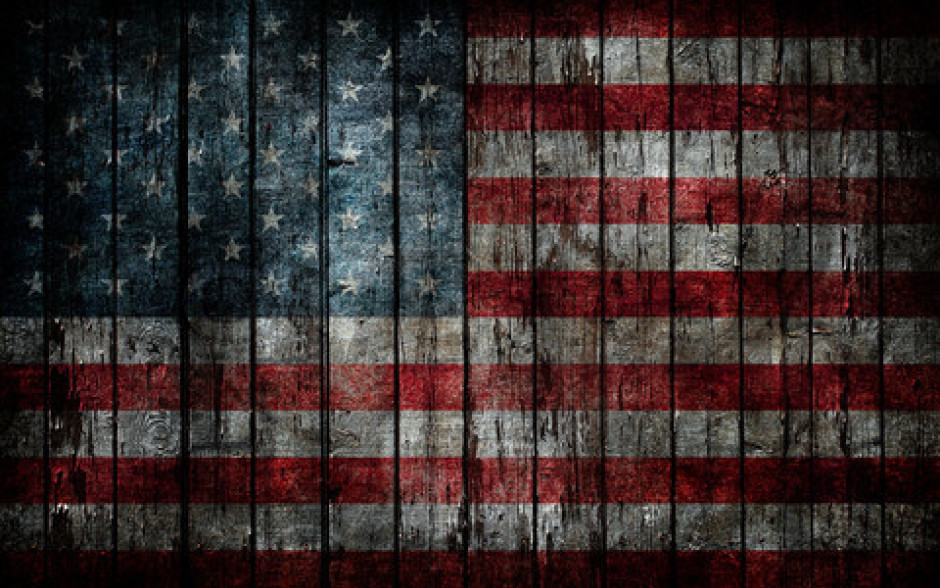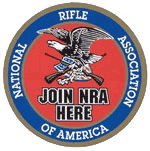

First Point:
A bad/inexperienced Gunsmith can ruin a good firearm VERY quickly. Whether you
send your firearm to us or to another Gunsmith ask for references!
There is a TON of advice available from Friends, Family, Gun Counter Clerks, and the Internet. It’s often VERY hard to separate the good advice from the bad.
If you have a Firearm that has been previously serviced by a Gunsmith or Manufacturer, let them know about it before taking things into your own hands or taking the Firearm to another Gunsmith. Every
repair cannot be perfect and humans do make mistakes, let the Manufacturer or Gunsmith attempt to remedy their error/mistake before losing faith in them. Gunsmiths do make mistakes. The difference
between a good and bad Gunsmith is the GOOD Gunsmith will remedy their mistakes.
Need is a second opinion, give us a call or E-mail.
Second Point:
Keep a Wish List for your Firearms. Take Inventory of all of you Firearms, what you want to do to them, and the accessories you want to buy for them. This will keep your projects and thoughts
organized. When your projects are not organized you waste your hard earned money by making impulse or rushed purchases and/or work. If you decide to get work done to one of your firearms print a
"wish list" for that particular firearm and take it to the Gunsmith, let he/she take a look at the firearm, your plans/ideas, parts/accessory list and work out a plan. The Gunsmith can then tell you
what is worthwhile, what they can/can’t do, and generally what the job, parts and accessories will run.
If you come to the shop without a plan, without your firearm, or any idea of what your end goal is then you may end up with something you don’t want or are not happy with. Remember you may have an
"Idea" or "Accessory" that you are SET ON but have no experience with, but your Gunsmith may have handled 10 or so. Ask them if they know the product or job, ask their advice, and make an informed
decision. If they say it’s "no good" then perhaps you should alter your plans. If you decide to follow through and get poor results then you can only blame yourself. You don’t always have to buy the
best or most expensive products to get favorable results, but many times, a Gunsmith will know where the "value" comes into play.
If you are considering custom work, take pause and think through your project. THIS is the time to talk to the Gunsmith. Good advice can save the Gunsmith time, and save YOU lots of money.
A good Gunsmith can "Mold" your plans, and tune them to create something that makes your expectations come to life. If you don’t know what you want it’s almost impossible for a Gunsmith to create
something that you desire.
Work with your Gunsmith and they will work with you, and appreciate you more
for your consideration and planning.
A good plan is the best path for completing you gun projects. A good Gunsmith will VALUE your business and look forward to working with you to make your shooting better and more enjoyable.
Remember if you just bought a new or used Firearm please shoot it before wanting custom work done to it. If you or a Gunsmith modifies your Firearm and there were defects with the Firearm the factory
warranty will be voided. Be sure the firearm works and is broken in BEFORE making ANY changes.
For example, you just bought a new Remington 700 and you have a sound suppressor. Don’t send the gun off for threading before shooting it, the barrel may be bad or something else may be off. Once
it’s threaded and you discover problems it not covered under Remington Warranty.
Third Point:
Remember "Time is Money"!
A Gunsmiths livelihood depends on his/her time at the workbench. The longer he/she is at the Counter, on the Phone, answering Emails, etc... is time he/she is not able to bill for. Being away from
the bench is not only labor time lost but it builds the time/backlog for all Repairs/Custom Work in the shop. A good Gunsmith is ALWAYS busy, but if you approach them with patience, knowledge, and
respect they will return it in kind. (See Second Point)
Remember Gunsmiths love to chat and share stories, but it should really wait
till off hours so the Smith can maximize their efficiency and give their
Customers the best bang for the buck.
Often advertisements, manufacturers, or customers will refer to a Part or Accessory is listed as "Drop-In". Believe it or not many "Drop-In" items are not, they require stoning, machining or
fitting.
Remember just because someone else says or thinks a job is quick or a "5 Minute
Fix" and is easy does not make it so for the Gunsmith. Usually the jobs we Gunsmiths think will go easy or quick don’t usually go that way too. The only easy day was yesterday.
Fourth Point and a LONG ONE:
Often we talk to customers wanting to know what to do about a malfunction issue with a weapon they own. When we ask what the problem is, many times we hear
something like, "It jams every so often." Well, it doesn’t get any more vague than that, now does it?
So to help our Customers I would like to get you up to speed on how to communicate either to us or your Gunsmith about a malfunction problem so that
you can actually get valuable advice in return.
Remain calm and polite. Tirades about how disappointed you are will serve no purpose. Present yourself as a knowledgeable shooter and explain the steps you
went through to check out the gun. Also note the ammo you have tried in the gun. Include complete contact info, even an e-mail address if you have one, and ask that you be notified when the gun has
been examined.
Even if there's a real problem, informed customers can speed up things if they have already eliminated possible user errors the Gunsmith may suspect. A word of advice, don’t get bent out of shape if
the Gunsmith asks about your shooting technique, ammo or general firearm aptitude. Considering roughly 70 percent of customer complaints are due to user error rather than factory defects, who can
blame them?
There is one other very common problem, particularly with certain handguns. It's often called "limp-wristing", whereby the shooter does not lock his wrist and the gun malfunctions because the frame
is keeping pace with the slide under recoil, thus not allowing cartridges to eject and chamber properly. This often results in stovepipe jams where the empty case is caught in the slide, preventing
it from closing on the next round. Have another shooter try the gun. If it works for him, you may need to tune up your shooting technique. Experimenting with different-weight recoil springs might
also help.
Maybe what you should do first is read your weapons user manual from front to back. I know, it's not a manly endeavor, but it's an important one. Then clean the gun thoroughly with a good degreaser,
and apply a quality lubricant (DONT USE MILTEC or WD40). New Firearms are factory-shipped coated with a rust preventative. While this ensures your gun arrives rust-free, it may not guarantee smooth
operation.
No matter the make or design, the owner can make the ownership of a firearm a more pleasant and trouble-free experience by following a few simple procedures.
First and foremost, understand the design parameters of your gun. Some weapons
are designed strictly for self-defense, with accuracy a secondary concern. They're purposely built with somewhat loose tolerances to enhance reliability.
See here for products I recommend for firearms: Gun Care Products this Gunsmith
Uses
See here for how to clean after shooting corrosive ammunition: Corrosive Ammunition Gun Cleaning
See here to read how I clean Firearms: Gunsmith Advice for
Cleaning Firearms
During cleaning, check over the gun carefully for defects, rough spots or burrs that may cause problems. Check the extractor. Make sure the lip is well shaped and smooth, and slide an empty case in
place to test tension. The extractor should hold the case snugly against the breech face but not so tight it's hard to remove (DO NOT USE LIVE AMMUNITION). Check the ramp for smoothness.
Don't panic if you find minor rough spots or tool marks. They're common. Unless the situation is hazardous, go ahead and reassemble the gun and head for the range. Carry along a couple hundred rounds
of quality ammo, not some 1942-vintage lacquer-coated military surplus you got at the last gun show. Give the gun a fighting chance by using commercial ammo of recent manufacture.
Some will tell you that you need to try different loads until you find one that functions well in your handgun. I don't buy it. If your self-defense Firearm will not function flawlessly with any
quality load, do NOT bet your life on it.
Note that some manufacturers clearly list certain guns as designed for certain
ammo only, so ask and research before you buy.
If you’re new firearm experiences a few bobbles on its maiden voyage, don't panic. You need to give it a reasonable break-in period for parts to mesh with each other. Two hundred to 300 rounds should
work the kinks out of most guns, but tight-fitting models may require more. If you experience malfunctions during break-in, make note of each one and try to determine exactly what caused them.
Information about malfunctions needs to be as specific as possible, and I realize that this is not always easy. If you have a malfunction while in a fire fight or a shooting match, you’re probably
too preoccupied to examine the condition of the weapon before clearing it and bringing it back into action, which is another topic altogether.
If you are just shooting recreationally, though, and lives and scores are not at risk, then STOP and LOOK when a malfunction occurs. Take a moment to figure out what really happened. Did the last
case extract from the chamber? Did it clear the ejection port? Is it stove-piped with the bolt pinching it to the front of the port? Where is the next round? Partially in the chamber? Still half in
the magazine with the bolt on top of it? Pay attention to every detail, and if you can’t remember, keep a notebook and take some notes about the exact situation as near as you can tell.
Many times, a customer will say the weapon fails to eject when what he/she really means is that the weapon failed to extract......a big difference when seeking a diagnosis from the Gun-Doctor. If the
fired case is still in the chamber, and the bolt is attempting to feed a round behind it, this is not a double-feed but a failure to extract.
If the fired case is fully out of the chamber but stuck in the upper receiver in combination with the next round trying to feed, then you have a failure to eject. If the fired case has ejected and is
somewhere on the ground, the rifle did indeed fire, extract and eject. This means we’re looking at where the next round or rounds are in the scheme of things. Is the bolt on top of the next round in
the magazines and putting a big dent in it? Did the bolt pick up the rim of the next case and attempt to strip it from the magazine? Is it still partially in the magazine, stopped with the tip on the
feed ramp? Is it half in the chamber? Is the next live round actually in the chamber with another round stacked behind it?
Feeding failures are often due to a faulty magazine. Number your magazines with
marker or labels. If you received two magazines with the gun, check to see if the jams are occurring with one and not the other. If only one magazine was included, get another one and try it. If you
can determine the problem is definitely with the magazine, you'll save the expense and hassle of getting the firearm serviced.
The point here is to first understand the full sequence of events in the firing of the Firearm and try to SEE and UNDERSTAND at just what point this sequence is interrupted. In so doing, and by
relaying this information accurately to your "Doctor," you are much more likely to get a useful diagnosis and an effective solution.
If you are experiencing problems with your Firearm with reloads then stop, and get some factory loaded ammunition. Just because you have experience in reloading don’t mean your loads can't be bad, or
setup wrong. Don’t diagnose a Firearm with reloads. If your Firearm works on factory ammunition and not on your reloads it’s likely NOT the Firearm that’s the problem.
Fifth Point:
Not all Gunsmiths work on guns both old and new. You may need a "Niche Gunsmith" for your pet project. If you have more basic needs you’re going to need a "Full Service Gunsmith" Remember, not every
gun is worth fixing, and it may have "Sentimental Value" but remember that "Sentimental Value" rarely equates "Monetary Value". Know that a firearm in poor/neglected condition will not be a cheap
repair.
Here’s some "Basics" on what a Gunsmith does/might offer:
• Keep records of all customers, firearms, and transactions to satisfy ATF
requirements, though this doesn't apply to pre-1800 gunsmiths.
• Disassemble, clean, inspect, lubricate & reassemble
• Remove corrosion and touch-up finishes
• Repair burred or damaged parts with files & stones
• Replace defective parts with factory-made/In-Spec replacements, and hand fit
as necessary
• Add after-market customizations
• Install and Fit Sling Swivels
• Install and Fit Recoil Pads
• Adjust or Install Iron-Sights (Dovetailed, Threaded, or Soldered)
• Install and Sight in Scopes/Optics
• Install Grip Caps
• Install Butt Plates
• Repair and Re-finish Wooden Stocks
• Checker or Re-Checker Grips/Grip Areas
• Deepen or clean up worn or damaged engravings & markings
• Re-crown damaged muzzles on a lathe
• Repair dented shotgun barrels
• Install (solder) or repair rib on shotgun barrels, or repair double-barrel
assemblies
• Measure & correct head-space dimensions
• Check for excessive bore erosion
• Troubleshoot and repair feeding, ejecting & firing problems
• Test-fire firearms with conventional loads to ensure proper operation
• Fabricate wooden stocks to customer specifications and body dimensions. Fit
same to existing receiver and barrel
• Glass-bed actions to stocks to improve accuracy
• Remove existing metal finish, and refinish metal parts with specified
treatment/coating
• Fabricate replacement parts from metal stock
• Modify trigger-pull weight through careful stoning/polishing of trigger
mechanism parts
• Fire proof-loads through weapons to insure sufficient strength of parts under
over-load conditions
• Replace worn barrels, which have fired so many rounds that they are no longer
of the specified caliber (which leads to loss of accuracy)
• Change caliber or cartridge of existing rifle, by changing barrel, and
modifying receiver
• Re-cut rifling and change caliber of existing barrel
• Design and build complete rifles by fitting stock barrels to stock receivers;
fabricating or purchasing additional parts as needed, and fitting same to
rifle. Fitting custom stock to same
• Design and build a complete rifle starting with several pieces of blank steel
and a slab of walnut; using nothing more than a lathe, saws, files, chisels,
& rasps
- AR15 Services
- General Shotgun Gunsmith Services
- General Handgun Gunsmith Services
- General Rifle Gunsmith Services
- Gunsmith Backlog
- Firearm Consignment Services
- Firearm Appraisal Services
- Trigger Pull Gauge Services
- Headspace Gauging & Safety Check Services
- Tips on how to talk to your Gunsmith
- Firearms Transfers
Contact Us
Scott's Gunsmithing Service
231 Thelma Avenue
Glen Burnie, MD 21061
Phone: 410 761-9815
Fax: 410-761-9816
You can also or use our contact form.
Business Hours
Sunday CLOSED
Monday CLOSED
Tuesday 10:00 A.M.-6:00 P.M.
Wednesday 10:00 A.M.-6:00 P.M.
Thursday 10:00 A.M.-6:00 P.M.
Friday 10:00 A.M.-6:00 P.M.
Saturday 9:00 A.M.-5:00 P.M.








